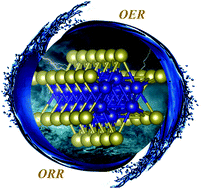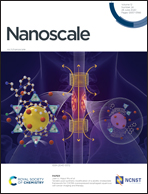Transition-metal monochalcogenide nanowires: highly efficient bi-functional catalysts for the oxygen evolution/reduction reactions†
Abstract
Stable bi-functional electrocatalysts for the oxygen evolution/reduction reactions (OER/ORR) are desirable for rechargeable metal–air batteries and regenerative fuel cell technologies. In this study, the electronic structures and catalytic performance of recently synthesized transition-metal monochalcogenide (MX, M = Cr, Mo, W; X = S, Se, Te) nanowires (NWs) were systemically investigated based on first-principles calculations. The results demonstrate that these MX NWs can be deemed as efficient bi-functional catalysts for the OER/ORR. In particular, the low overpotentials of CrTe NWs are even superior to those of the well-known noble catalysts. To study the origin of excellent electrocatalytic performance, we establish linear relationships between the adsorption strength of intermediates and the overpotentials. A comparison study reveals that the NWs exhibit better catalytic performance than the corresponding two-dimensional materials, indicating the superiority of the unique NW structures for catalysis. These computational results offer not only a new family of bi-functional OER/ORR catalysts, but also a promising perspective for the development of stable, low-cost and highly active non-noble electrocatalysts.



 Please wait while we load your content...
Please wait while we load your content...